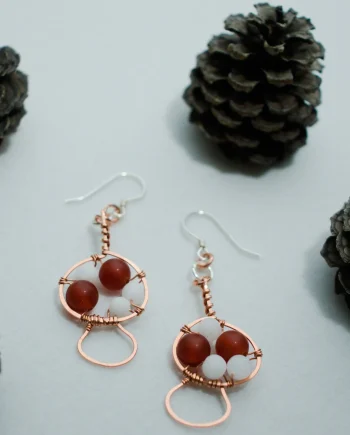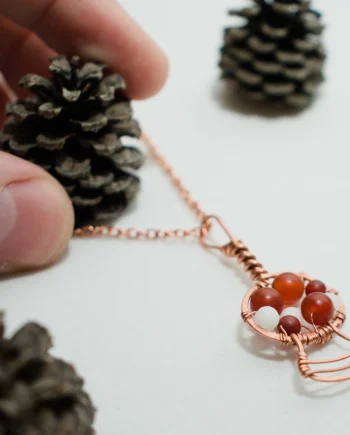
Amanita muscaria
Fly Agaric | Fly Amanita
Other mushrooms in the series:
Introducing Amanita Muscaria
This cute-as-a-button mushroom is quite eye catching with its brilliant red cap with white specks smattered around. It, perhaps, could be said to be the mushroom one pictures when one pictures a mushroom.
She pops up in the woodlands and forests of coniferous (pine, spruce, fir) and deciduous (birch and aspen) alike, on her own, with a few friends, or ‘dancing’ in faerie rings – her bright red cap a signal for mushroom hunters to be on the lookout for her tasty companion Boletus edulus, who often lives nearby.
She also has made quite the impression on our culture, making in a cameo in familiar favourites such as Alice in Wonderland or Super Mario Brothers, classic faerie paintings or the Smurfs; or as a plastic incarnation in your neighbour’s patio garden.
Amanita Muscaria in the shop:
In the Wild
Amanita muscaria first pokes up as a white orb – its universal veil is all you see. As it grows, the red colour of its cap emerges, the white patches of the veil remaining as the dots scattered across the surface.
There are many variations to the colour, however: according to Mushrooms Demystified by David Arora, its colour can appear from variations of red (var. muscaria and var. flavivolvata), orange to yellow (var. formosa), yellow to peach (var. persicina), or white (var. alba).
The most common is the red with white dots (muscaria), however, which is found throughout North America, Europe, and Asia.
The Fly Agaric forms an ectomycorrhizal symbiotic relationship with the trees it grows. Ecto meaning ‘outside’, myco for ‘fungus’, and rrhizal referring to the root – an ectomycorrhizal relationship involves the fungus enveloping the roots of its partner species, and creating a sort of marketplace where the fungus exchanges nitrogen and other nutrients for carbon from the tree. These relationships are symbiotic or beneficial to everyone involved. In fact, trees with these partnerships are more resilient to drought and grow better than the same tree growing without a fungal friend.
A. muscaria is classified as poisonous, though deaths are exceedingly rare. It has been used in religious ceremonies in the past, especially in Siberian indigenous groups.
One of the common psychological effects is objects appearing larger (macropsia) or smaller (micropsia) than they are, either alternating between the two, or occurring at the same time. You may recognize this from that part of Alice in Wonderland where she eats from the mushroom to grow or shrink to progress through the story, or in Super Mario Brothers where eating the mushrooms makes you a larger force to reckon with.
The common names ‘Fly Agaric’ or ‘Fly Amanita’ are said to originate from its use as an insecticide when powdered and mixed with milk. It has since been determined that one compound of the mushroom actually attracts flies, who become intoxicated from its effects. I like the alternative theory proposed by Didier Michelot and Leda Maria Melendez-Howell, who suggested the name stems from the idea from the Middle Ages that a fly could enter through one’s ears and enter the head, causing one to act crazy. (‘Amanita muscaria: chemistry, biology, toxicology, and ethnomycology’ paper by Michelot D; Melendez-Howell LM. (2003).)
Check it out in the shop!
Useful Links:
*These links include affiliate links, for which I may receive a small amount at no extra cost to you.
- Mushrooms Demystified – David Arora (A hefty, not that portable, extensive mushroom identification book)
- All That the Rain Promises and More – David Arora (A lighter, more portable basic mushroom identification book)
- Mycelium Running: How Mushrooms Can Help Save the World – Paul Stamets (An interesting read on the potential role of mushrooms in remediation)


